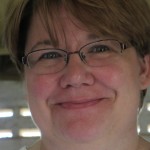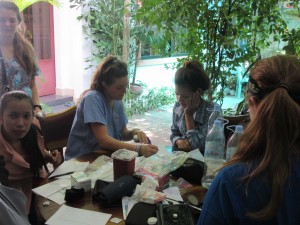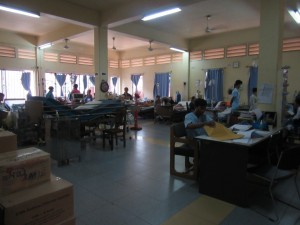
Study Abroad in Cambodia
by Jenni Massie, Nursing Student
Today (Wed 5/20) was a great day. We (Belmont Nursing) had our first outdoor free clinic under a beautiful tree-covered veranda that provided shade so we could care for the Cambodian people.


A room at the guest house adjacent to the veranda was used for breast and pelvic exams. The organizations Precious Women and the Kone Kaming clinic provided this space. Our clinic also benefited from having a student of social services (Sarah) and physical therapy (Kate), this has allowed us to expand the care of the clinic beyond nursing.
The Clinic was set up in stations. Triage is responsible for vital signs, height and weight, getting a short history, and chief complaint. The assessment station, where I had the opportunity to work, further explored the patient’s history, performed a focused physical assessment, made a diagnosis, and recommended treatment or medication. Then the patient was directed to the pharmacy and treatment area.
All of the medications, equipment, and supplies were donated or purchased with donated money.

Later that afternoon we toured Sihanouk Hospital Center of Hope. This is an amazing place.
The hospital provides free care to the poor; education and clinical training to medical professionals. After the genocide of the Khamer Rouge, Cambodia was left with absolutely no education system and very few health care providers. The country has worked hard to rebuild, people from around the world have come to Cambodia to help in this huge undertaking. The progress in the last thirty years is impressive.
Despite the progress, the differences between medical care in Cambodia and Western medicine are stark. Things that have become standards of care in the States are just not available here. For instance, IV pumps. Cambodia uses roller clamps to control IV drips, a skill I learned in nursing school but have never used in practice. Also, there are no private rooms. The medical unit has about fourteen beds all in one big room, no air conditioning (lots of fans), and the family is responsible for providing food for the patient. Not to mention the electricity can be spotty at times but the hospital does have back up generators if needed.
Something to remember: Cambodia is hot and humid. The heat will take your breath away. I like air conditioning and do not function well in heat. I asked myself too many times to count “why am I here?”. The first time a Cambodian smiled, brought their hands together, with a slight bow and said “aw coon” (Thank you), I fell in love. I knew why I was here. The Cambodia people are gracious and so thankful. They have so little, but give so much.
